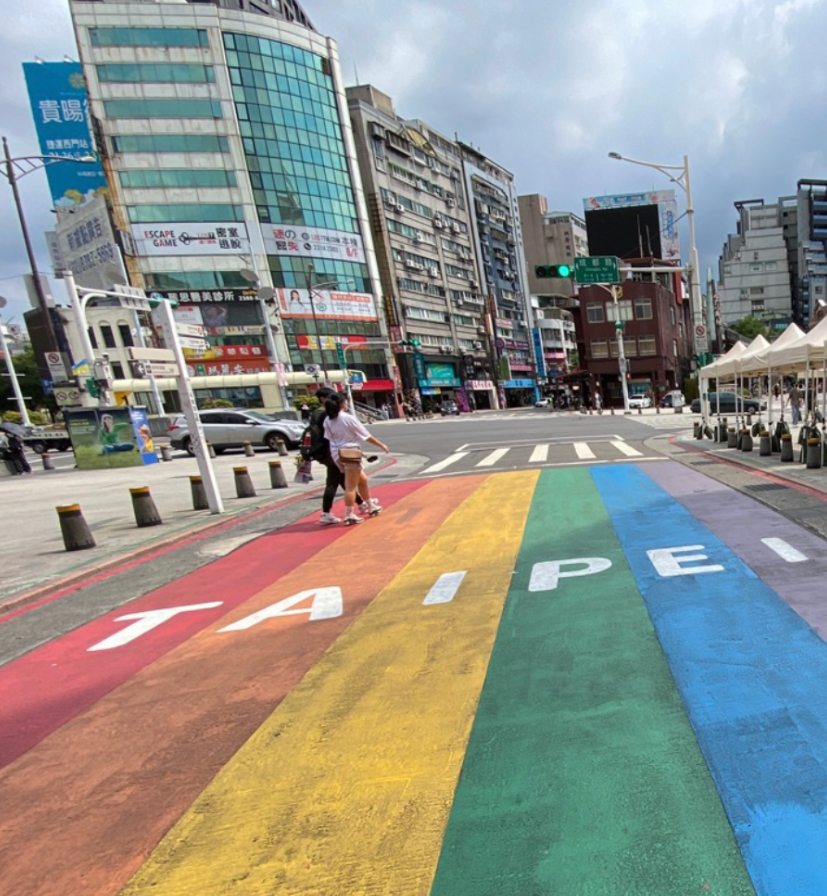Since the spread of the Covid-19 pandemic, tourism in Taiwan has stalled because of strict border restrictions. However, the Taiwanese government recently announced that it will lift its border restrictions starting Oct. 13. Because I have been traveling around Taiwan for the past few months, I’ve decided to introduce a few of the most popular tourist attractions in Taiwan, starting with Taipei.
Located near the northern tip of Taiwan, Taipei is not only the capital, but also the center of commerce, industry, finance and transportation of Taiwan. Among the many visit-worthy spots in Taipei, some tourist favorites are Taipei 101, Liberty Square/Chiang Kai-Shek Memorial Hall, National Palace Museum, Lungshan Temple, and Shilin Market.
Taipei 101
Situated in one of the best locations in the city, Taipei 101 is currently the tenth tallest building in the world. Back when the building was constructed in 2004, it was the tallest building in the world with a height of 1,667 feet (508 meters) and, as its name suggests, 101 floors. The building consists of two high-speed elevators, which each have a rising speed of 1,010 meters per minute. As a result, going from the 5th floor to the observation deck on the 89th floor of the building only takes a mere 37 seconds. These elevators are the world’s only intelligent high-speed elevators that have constant pressure devices, dampers, and high-temperature pressure devices.
At the observation deck located on the 89th floor, the clear glass windows of the building show a vast view of the landscape and buildings in Taipei.
Another feature of the building that makes Taipei 101 a popular tourist attraction is a giant, 660-metric-ton wind-damping ball. Technically known as a Tuned Mass Damper (TMD), the wind-damping ball is a golden orb that reduces vibrations caused by earthquakes or high-speed winds. This is especially useful because of the building’s tall height. The building is susceptible to oscillation from earthquakes and strong winds, so it requires a TMD to prevent people inside the building from feeling dizzy. While most other TMDs are hidden from tourists’ sight, the wind-damping system in Taipei 101 is both a functional and aesthetic attraction that is open for tourists to see.
Additionally, the “Damper Baby”, which are five different characters made to resemble the wind-damping ball, is a feature of Taipei 101 that is particularly popular among children, and can be noticed throughout the observation deck of Taipei 101. These cute characters come in a variety of colors, and they even have different personalities and catchphrases.
Other than the observation deck, the Taipei 101 building primarily serves as an office building and a large mall with many places for high-end shopping and dining.
Liberty Square/National Chiang Kai-Shek Memorial Hall
In addition to the Taipei 101 building, another eye-catching and popular tourist location in Taipei is the Liberty Square and National Chiang Kai-Shek Memorial Hall. Completed in 1980, the Liberty Square and National Chiang Kai-Shek Memorial Hall were constructed in memory of Taiwan’s first president, Chiang Kai-Shek. Liberty Square is a large park that includes the Liberty Square Archway, Main Plaza, Hall, National Theater, National Concert Hall, corner cloister pavilions, colorful gardens, and more.
At the entrance of the park is an archway with the Chinese characters, “自由廣場”, meaning “Liberty Square.” Behind the archway is the “Democracy Square,” which has the National Concert Hall and National Theater on its left and right, respectively. The “Democracy Boulevard” leads directly to the National Chiang-Kai Shek Memorial, which has the “Bronze Statue Hall,” where there is a 6.3-meter tall statue of President Chaing Kai-Shek. In addition to the statue of Chiang Kai-Shek, the memorial hall also includes a museum about the president’s life and an exhibition of his belongings.
Although Liberty Square was made in memory of President Chiang-Kai Shek, the place is used to host a variety of educational programs, and promote cultural arts and performances. In addition, the National Chiang Kai-Shek Memorial Hall is dedicated to raising awareness about human rights. Since 1998, the memorial hall and the surrounding area have served as places for protestors to gather for movements such as the “Tiananmen Square protests” in 1989, the Anti-Nuclear March in 1994, and more recently the Marriage Equality “Rainbow Event” in 2014. In these ways, Liberty Square is an important witness of Taiwan’s journey to democracy and tolerance towards diverse perspectives.
National Palace Museum
Taipei is also well known for having many museums around the city. Particularly, the National Palace Museum, is among the top 20 most visited museums in the world, with more than 4.5 million visitors in 2019 and 2020. The reason for its immense popularity is that the museum has the largest collection of Chinese art and artifacts in the world. The National Palace Museum’s collection includes more than 650,000 pieces of art and artifacts that show over 4,000 years of Chinese history from the Shang dynasty to the Qing dynasty. The massive collection includes some of the world’s finest Chinese paintings, ritual bronzes, jade, ceramics, lacquerware, enamelware, decorative carvings, embroidery, tapestry, books, and documents.

The majority of the museum’s main collection comes from the imperial art collection that was formerly in the Imperial Palace located in Beijing, China. Of the art and artifacts in the imperial art collection, many were collected by Emperor Qianlong, who reigned during the Qing dynasty from 1735 to 1796. The imperial art collection remained a private collection until 1925, when the palace became a public institution. Later in the years preceding World War II, the collection was relocated to a series of locations due to conflict with Japan and the Communist Party, but it was then brought back together after the war. When the Nationalist army retreated from China between 1948 and 1949, the collection was taken with them to Taiwan and eventually displayed at the National Palace Museum in 1965.

Today, the museum is not crowded with tourists like usual because of the ongoing pandemic. As a result, it is possible for visitors to tour the museum-including its most famous artwork, the Jadeite Cabbage (a carving resembling bok choy made during the Qing dynasty)-without any hustle.
Lungshan Temple
Another location in Taipei that is famous for its history is the Lungshan Temple, which is a Buddhist temple located in Taipei’s most historic neighborhood, the Wanhua District (also known as Manka). Nearly 300 years old, the Lungshan Temple was founded in 1738 by immigrants from the Fujian province of China, and it was named after the ancient Lungshan Temple located in their hometown. Although the temple standing today is not the original building built in 1738, the Lungshan Temple serves as the center of religious life and community among locals.
The current Lungshan Temple consists of three different halls: the fore hall, the main hall, and the rear hall. The fore hall serves as the entrance of the temple, and a place for visitors to worship. The main hall is the core of the entire temple, as it is where the statue of the Buddhist goddess of mercy, Kuan-in, is enshrined. To the left and right of the statue of Kuan-in are two statues of bodhisattvas (an enlightened being who is on the path to becoming a buddha), Manjusri and Samantabhara, respectively. In addition, the statue of eighteen Arhans can be noticed on both sides standing as attendants. Lastly, the rear hall (which was added during the late 1790s), is divided into three parts which are dedicated to the goddess of marine voyage (Matzu), the god of literature (Wenchang Dijun), and the god of war (Lord Kuan). In addition to these gods, there are also many other gods that were moved to the rear hall of the Lungshan Temple when some temples were destroyed due to the development of the town. Originally, the Lungshan Temple was only dedicated to the Buddhist goddess of mercy and other Buddhist deities enshrined in the main hall. However, due to the inclusive nature of Taiwan’s perspective of religions, the temple later on embraced Taoist and Confucian beliefs as well.
Throughout the Lungshan Temple’s existence, it has experienced much damage. In particular, during World War II, Taiwan was bombed repeatedly by Allied forces because it had been under the occupation of Japan. On June 8, 1945, the entire main hall and other parts of the Lungshan Temple were destroyed because of the air raids, but surprisingly, the statue of Kuan-in survived miraculously. This incident remains the Lungshan Temple’s most famous manifestation of efficacy.
In addition to the miraculous survival of the Kuan-in statue, the Lungshan Temple’s existence has been made possible due to the help of the local community. Up to now, most of the rebuilding of the temple has been funded by donations from the local community rather than the government. Even during the pandemic, the Lungshan Temple remains crowded with local people visiting the temple to worship.
Shilin Night Market
Last but not least, Taipei is also famous for its tasty street food at night markets. In particular, the Shilin Night Market is one of the largest night markets in Taipei and is popular among locals and tourists for its delicious food. The market consists of shops on Wenlin Road, Dadong Road, Danan Road, and more. The Shilin Market itself was built in 1899, although its location has changed since then.
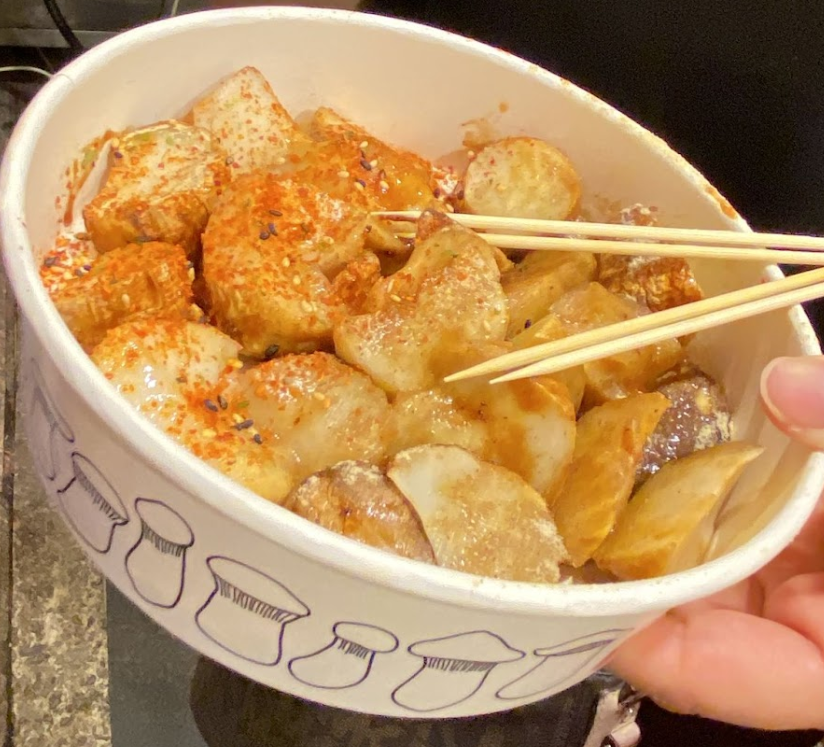
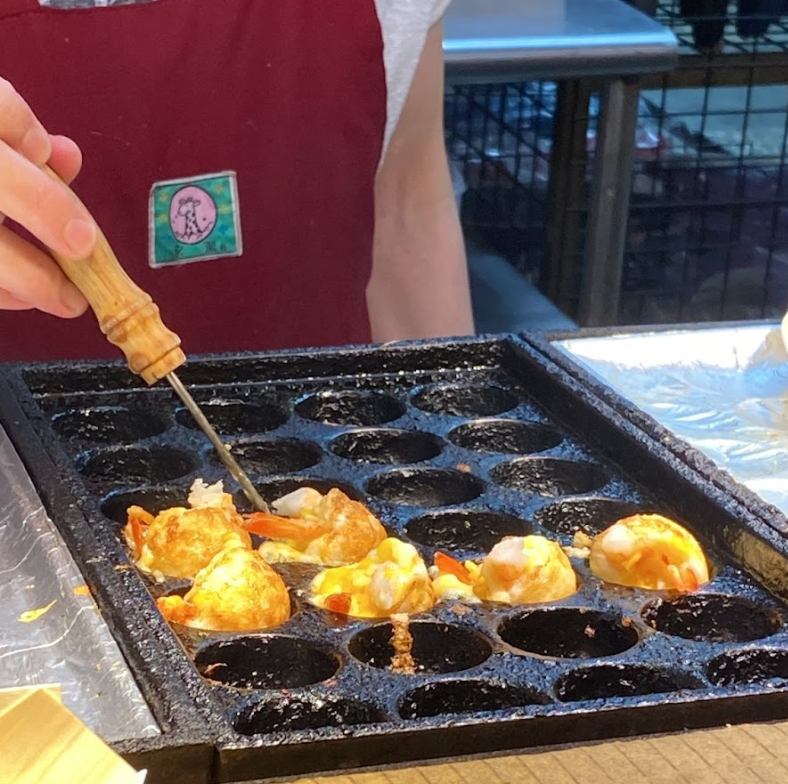
Due to the large and complex location of the Shilin Night Market, it is often difficult for tourists to navigate around the market. However, the entire market presents many surprises at every stall, including tasty Grilled King Oyster Mushrooms, Hometown BBQ Chicken, Taiwan’s famous bubble tea, and the infamous stinky tofu. Walking around the night market, some stalls sell familiar foods such as grilled sausages, candied fruits, and smoothies. On the other hand, other stalls sell uniquely Taiwanese foods like bubble tea, giant fried chicken steak, grilled squid, fried buns, and oyster omelet (蚵仔煎), just to name a few.
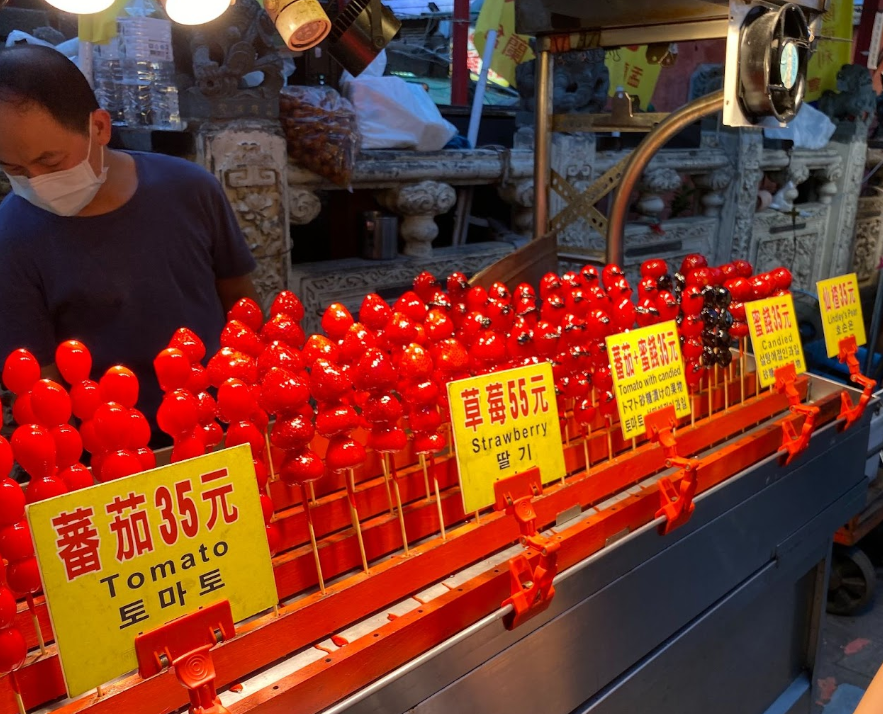

Based on my personal experience at the Shilin Night Market, some of the tastiest foods at the market include strawberry tanghulu, fried milk, Grilled King Oyster Mushrooms, as well as shrimp egg takoyaki. Other foods that are often recommended include fried chicken cutlets, various fruit juices, and medicine-stewed pork ribs. Not only are these foods tasty, but what makes them better are their cheap prices. Most of the foods sold at the stalls in the Shilin Night Market range from about $15 to $100 NTD (New Taiwan Dollars), which is approximately $0.50 to $3.30 USD (United States Dollar).
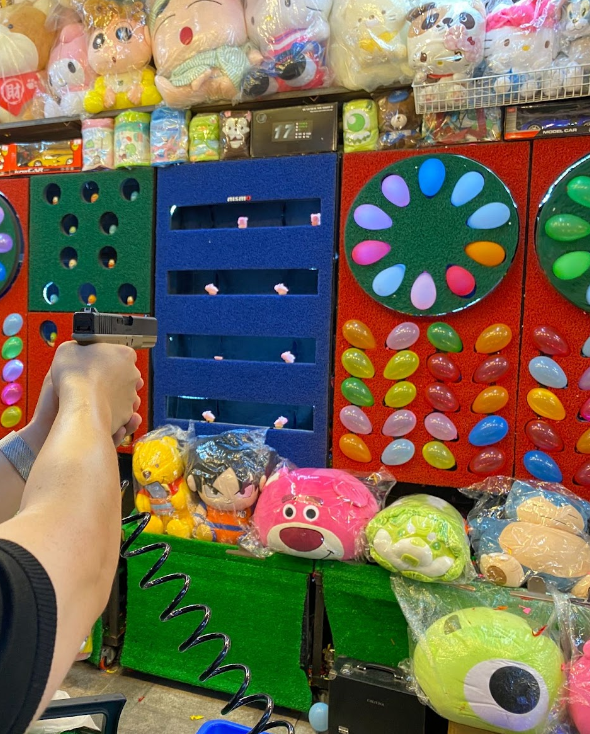
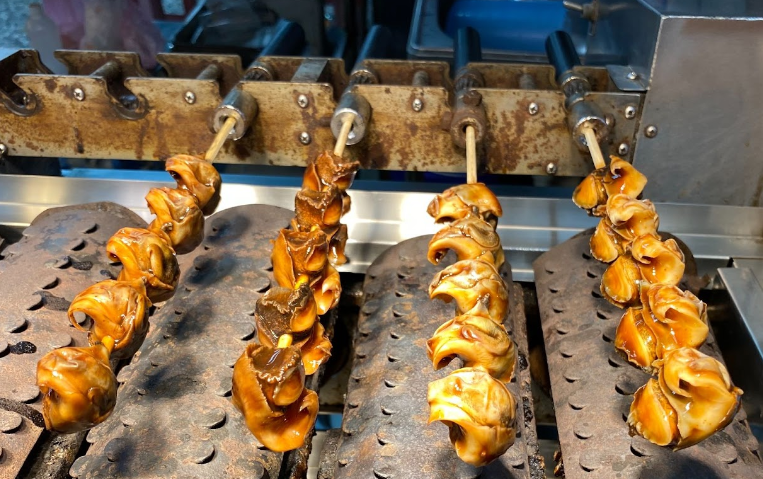
Other than food sold at stalls, the Shilin Night Market also has many opportunities for shopping and playing games. Shops at the night market sell a variety of different items like clothes, bags, phone cases, jewelry, and even pet clothing at cheap prices. Many game stalls are also present at the entrance of the Shilin Night Market, ranging from popping balloons for giant stuffed animals to catching shrimp with a fishing rod to grill and eat.
These are only a few of the many places in Taipei to visit when going to Taiwan for a vacation. All around Taipei, there are many opportunities to learn about and enjoy the unique characteristics of Taiwan’s technological advancements, history, culture, and food!
Photo credit: Diane Kim

